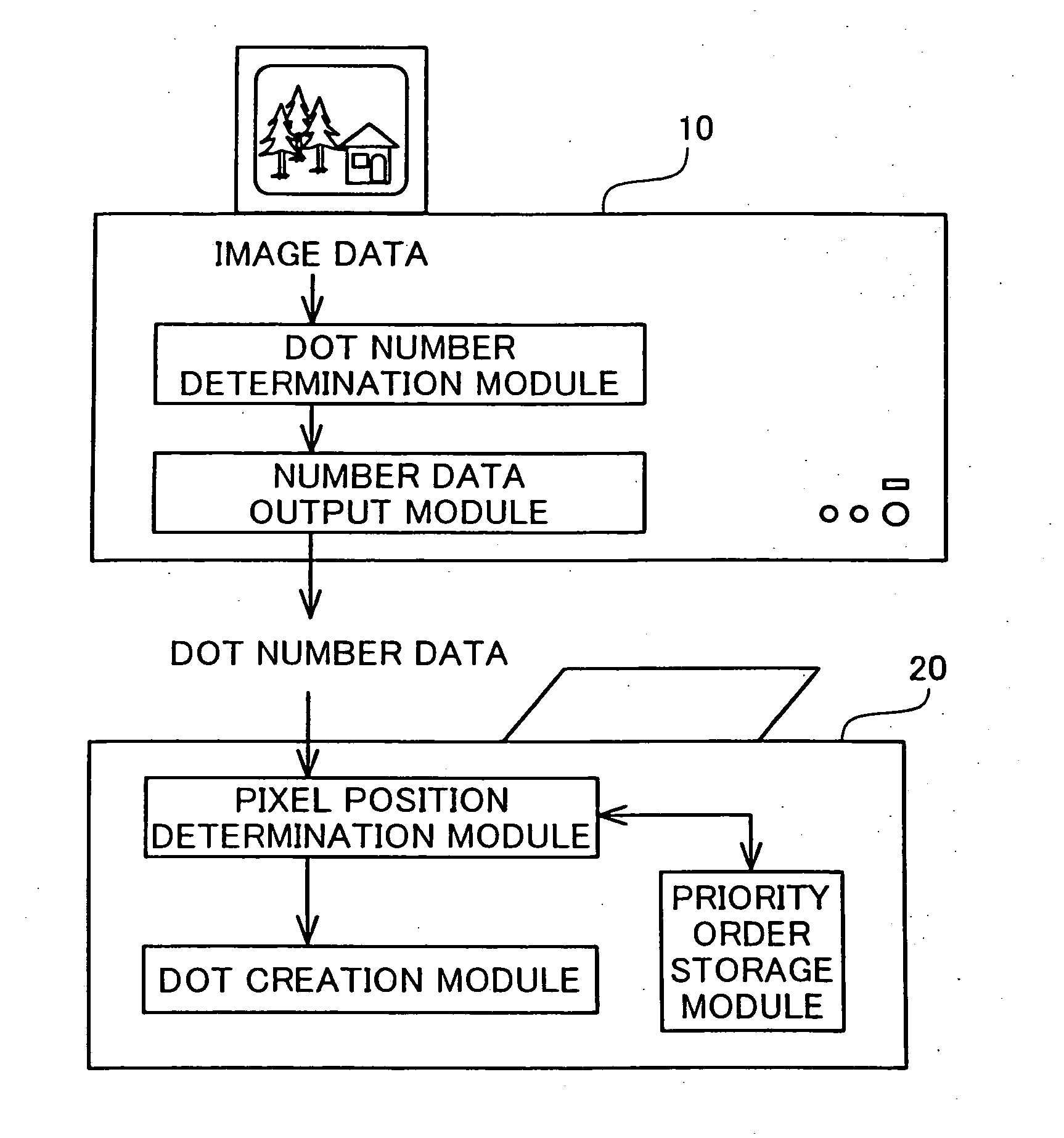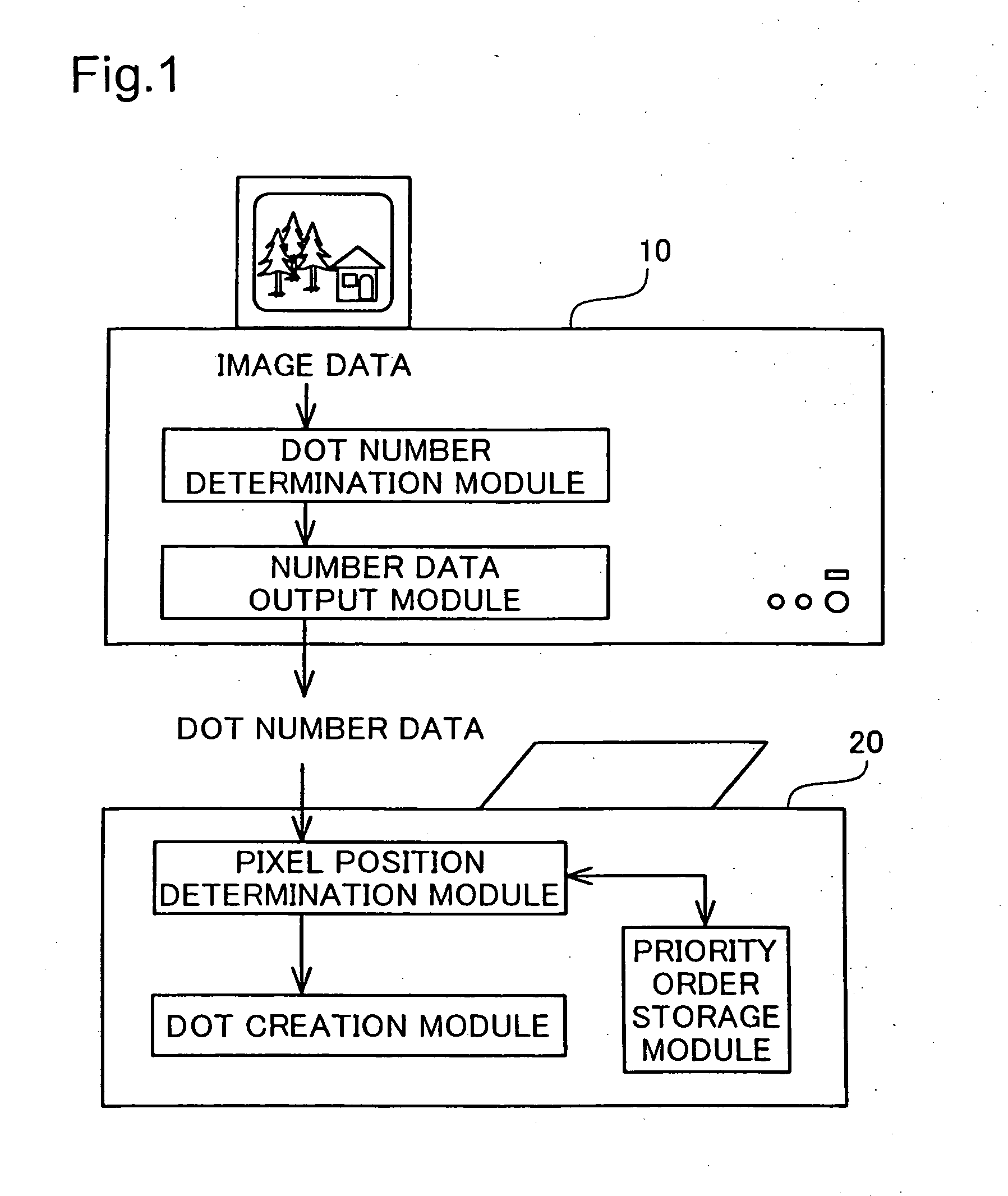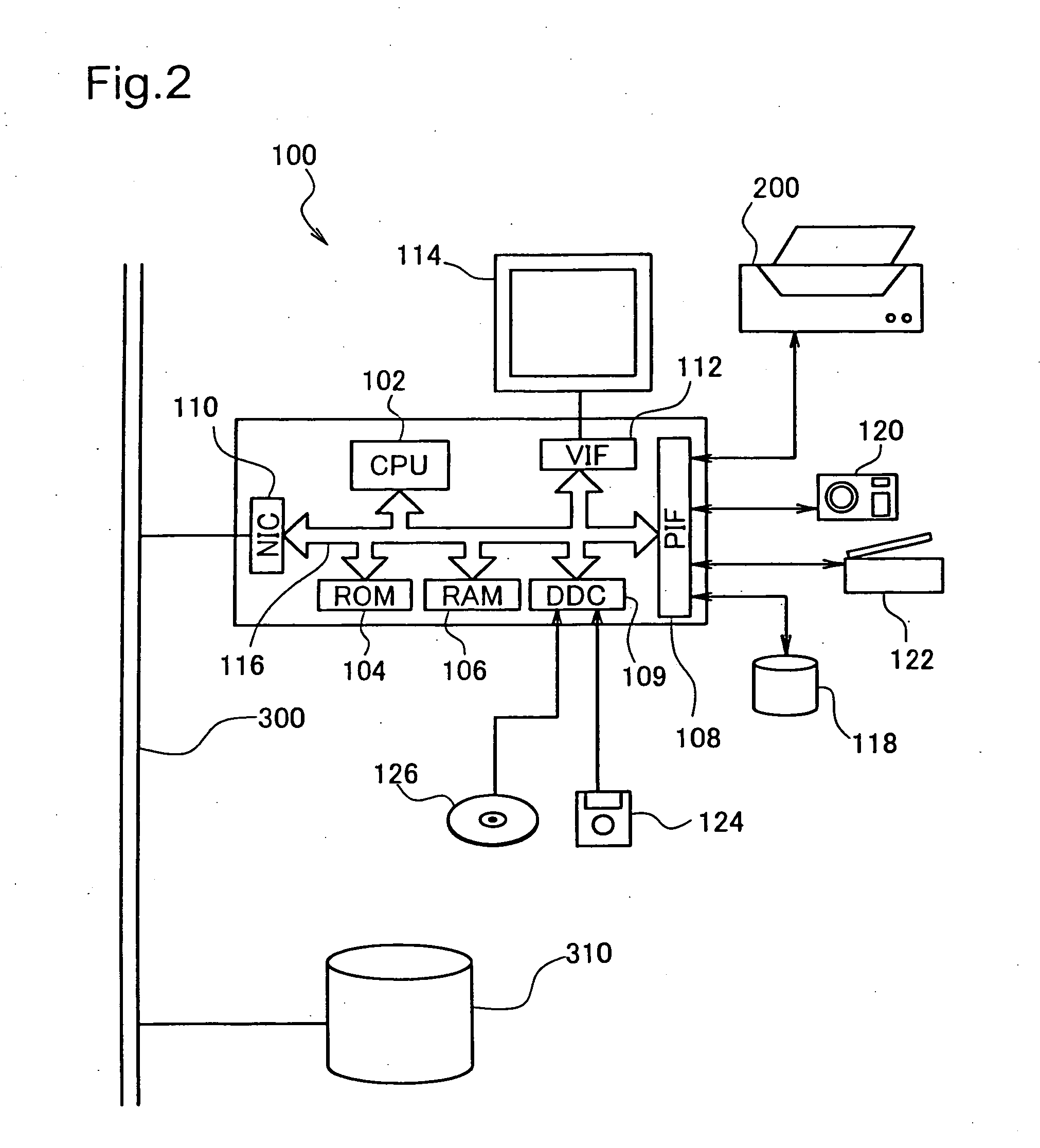Technique for image data recording
a technology of image data and recording, applied in the field of image data recording, can solve the problems of affecting the speed of image display, reducing the picture quality of displayed images, and extending the time required for data supply, so as to achieve the effect of prompt image display
- Summary
- Abstract
- Description
- Claims
- Application Information
AI Technical Summary
Benefits of technology
Problems solved by technology
Method used
Image
Examples
first embodiment
B. First Embodiment
[0085] B-1. System Configuration
[0086]FIG. 2 illustrates the configuration of a computer 100 as an image processing device in a first embodiment. The computer 100 is a known computer including a CPU 102, a ROM 104, and a RAM 106 interconnected via a bus 116.
[0087] The computer 100 has a disk controller DDC 109 to read data from, for example, a flexible disk 124 or a compact disc 126, a peripheral equipment interface PIF 108 to receive and send data from and to peripheral equipment, and a video interface VIF 112 to drive and actuate a CRT 114. The PIF 108 is connected with a color printer 200 described later and a hard disk unit 118. Connection of a digital camera 120 or a color scanner 122 with the PIF 108 enables printing of images taken by the digital camera 120 or the color scanner 122. Insertion of a network interface card NIC 110 to the computer 100 causes the computer 100 to connect with a communication line 300 and obtain data stored in a storage device 3...
second embodiment
C. Second Embodiment
[0148] The procedure of the first embodiment discussed above divides one pixel into multiple smaller pixels and gathers the multiple smaller pixels as divisions of an identical original pixel to a pixel group. Division of one pixel into multiple smaller pixels is required, for example, when an image is printed at a higher resolution than the resolution of input image data. In the procedure of the first embodiment, the respective pixels included in one pixel group have an identical tone value. The technique of the invention is, however, also applicable to a pixel group of multiple pixels having different tone values. For example, when the printing resolution is set identical with the resolution of the input image data and one pixel group includes multiple pixels of image data, the multiple pixels included in the pixel group may have different tone values. In another example, when additional pixels are newly created for printing an image at a higher resolution than...
third embodiment
D. Third Embodiment
[0170] In the first and the second embodiments discussed above, each pixel takes only either of the two tone values corresponding to the dot-on state and the dot-off state. Some printers may, however, be capable of varying the size of dots or varying the density of ink used for dot creation to express a greater number of tone values in individual pixels. The technique of the invention is effectively applicable to such multi-valued printers. Application of the technique of the invention to a multi-valued printer is described below as a third embodiment.
[0171] D-1. Schema of Image Printing Process
[0172]FIG. 20 is a flowchart showing an image printing process executed in the third embodiment. The primary difference of the image printing process of the third embodiment from the image printing process of the first embodiment discussed above with reference to FIG. 5 is conversion of color-converted data into large-size, medium-size, and small-size dot data. The image ...
PUM
 Login to View More
Login to View More Abstract
Description
Claims
Application Information
 Login to View More
Login to View More - R&D
- Intellectual Property
- Life Sciences
- Materials
- Tech Scout
- Unparalleled Data Quality
- Higher Quality Content
- 60% Fewer Hallucinations
Browse by: Latest US Patents, China's latest patents, Technical Efficacy Thesaurus, Application Domain, Technology Topic, Popular Technical Reports.
© 2025 PatSnap. All rights reserved.Legal|Privacy policy|Modern Slavery Act Transparency Statement|Sitemap|About US| Contact US: help@patsnap.com



